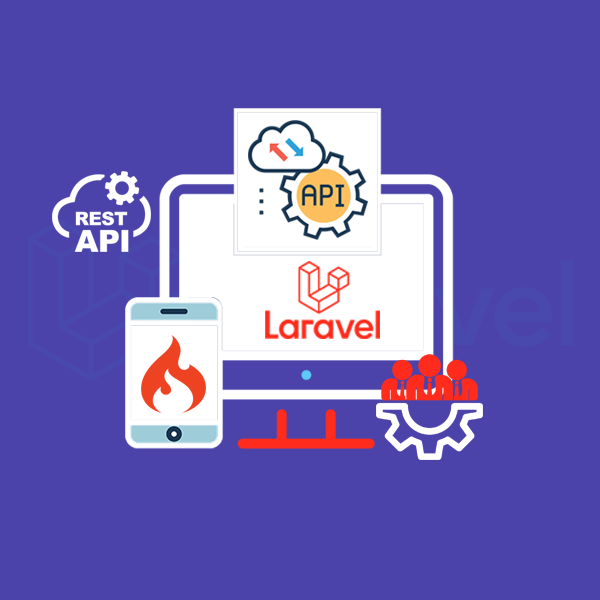Build Laravel Restful APIs using Laravel’s built-in features and popular packages | Connect Infosoft
Creating robust and scalable APIs is essential for building modern web applications, and Laravel is a popular PHP framework that offers powerful features and packages to make API development a breeze. In this article, we’ll explore how to create robust and scalable APIs using Laravel’s built-in features and popular packages. We’ll cover topics such as setting up a Laravel project, configuring the database, defining API routes, creating controllers, using middleware, and leveraging popular packages such as Laravel Sanctum. We’ll also discuss the best practices for versioning your APIs to ensure backward compatibility. By the end of this article, you’ll have a solid understanding of how to build Laravel Restful APIs that are robust and scalable in nature and power modern web applications.
Laravel provides a powerful framework for building RESTful APIs. It offers built-in features and integrates well with popular packages to simplify the development process. Here's a step-by-step guide to building Laravel RESTful APIs using Laravel's built-in features and popular packages:
Step 1: Set up Laravel
1. Install Laravel using Composer:
```shell
composer create-project --prefer-dist laravel/laravel api-project
```
2. Change to the project directory:
```shell
cd api-project
```
3. Start the development server:
```shell
php artisan serve
```
Step 2: Create API Routes
1. Open the `routes/api.php` file and define your API routes.
```php
use Illuminate\Http\Request;
use Illuminate\Support\Facades\Route;
Route::middleware('auth:api')->group(function () {
// Protected routes
});
Route::post('login', 'AuthController@login');
Route::post('register', 'AuthController@register');
// Other public routes
```
Step 3: Create Controllers
1. Generate a controller for your resource:
```shell
php artisan make:controller API/PostController --api
```
2. Open the generated controller (`app/Http/Controllers/API/PostController.php`) and define the methods for handling different API endpoints.
Step 4: Define API Resources
1. Generate a resource for your model:
```shell
php artisan make:resource PostResource
```
2. Open the generated resource (`app/Http/Resources/PostResource.php`) and customize the JSON response format for your resource.
Step 5: Implement CRUD Operations
1. Inside the `PostController`, implement the methods to handle CRUD operations using Eloquent models.
```php
namespace App\Http\Controllers\API;
use App\Http\Controllers\Controller;
use App\Http\Resources\PostResource;
use App\Models\Post;
use Illuminate\Http\Request;
class PostController extends Controller
{
public function index()
{
$posts = Post::all();
return PostResource::collection($posts);
}
public function store(Request $request)
{
// Create a new post
}
public function show($id)
{
$post = Post::findOrFail($id);
return new PostResource($post);
}
public function update(Request $request, $id)
{
// Update an existing post
}
public function destroy($id)
{
// Delete a post
}
}
```
Step 6: Add Validation and Error Handling
1. Define validation rules for request data in the controller's methods.
2. Handle validation errors and return appropriate responses.
3. Utilize Laravel's exception handling to handle errors and exceptions globally.
Step 7: Authentication and Authorization
1. Install the Laravel Passport package for API authentication:
```shell
composer require laravel/passport
```
2. Follow the Laravel Passport documentation to set up and configure API authentication and authorization.
Step 8: Additional Features with Popular Packages
1. Utilize Laravel's built-in support for caching, queuing, and database transactions.
2. Integrate popular packages like Laravel Sanctum for token-based authentication, Laravel Fractal for transforming API responses, Laravel Cors for handling CORS (Cross-Origin Resource Sharing), etc.
Step 9: Testing the APIs
1. Write unit tests using Laravel's testing framework to ensure the API endpoints are working as expected.
2. Run the tests using PHPUnit:
```shell
./vendor/bin/phpunit```
That's it! By following these steps, you can build robust.
Let’s explore some examples of integrating Laravel with RESTful APIs
Here are a few examples of integrating Laravel with RESTful APIs using popular packages and built-in features:
1. Integrating with external APIs:
Laravel makes it easy to consume external APIs and interact with their endpoints. You can use packages like Guzzle HTTP Client or Laravel HTTP Client to send requests and handle responses.
2. Building API authentication with Laravel Passport:
Laravel Passport provides a complete OAuth2 server implementation, allowing you to issue API tokens and authenticate requests.
3. Transforming API responses with Laravel Fractal:
Laravel Fractal allows you to transform and format your API responses easily. It helps in structuring complex responses and including related data.
4. Handling CORS (Cross-Origin Resource Sharing) with Laravel Cors:
Laravel Cors package allows you to handle CORS headers and configurations easily. It enables you to define CORS settings and manage cross-origin requests.
These examples demonstrate how Laravel can be integrated with RESTful APIs using various packages and built-in features. You can explore more packages and Laravel's documentation to find additional features and integration possibilities based on your specific requirements.
TAGS: Build Laravel Restful APIs using Laravel’s built-in features and popular packages, Looking for Laravel Dev Team, Laravel Development Team, Hire Laravel Developer, Laravel Web Development Company, laravel web app development company, Laravel Restful APIs


